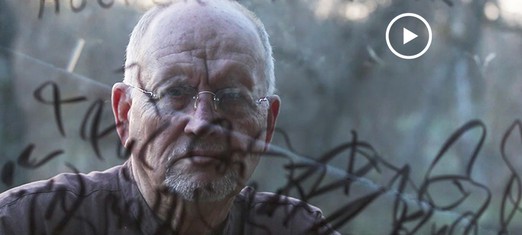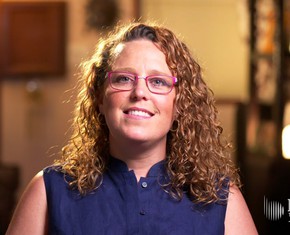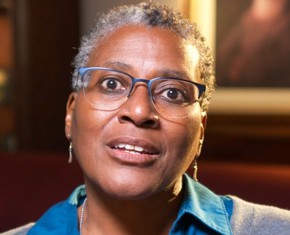Lots of theories exist about abstract art: it’s a reaction to the realism of photography, it tries to express the quantum sciences, it depicts feelings rather than objects.
But when you get past all the theories, abstract art—the non-representational use of color, form and line—has an even more interesting spiritual history that might surprise you.
While we tend to think of abstraction as a modern invention, it actually began to develop with the very first artists we know of, the indigenous cave painters in the Paleolithic era. These unnamed artists, who started making their art 40,000 years ago, created expressive and sometimes stunningly beautiful works on the walls of caves or on exterior rock faces. They drew and painted art and pictographs that resembled animals, Venus figures, the shapes of human hands—and abstractions called finger flutings that formed shapes, signs and symbols.
Contemporary rock art and cave painting experts believe that much of this art was created by shamans to portray their spiritual visions. The South African archaeologist David Lewis-Williams, who has extensively studied modern hunter-gatherer societies and their relationship to ancient cave paintings, concludes in his scholarly work that many of the oldest and most inventively abstract cave paintings were made by Paleolithic shamans to portray their spiritual visions.
As you might imagine, describing a spiritual vision doesn’t always lend itself to representational, figurative images. Also, since humans are the only living beings able to think in abstract ways, it stands to reason that we would create symbols that stand for our innermost thoughts.
That may be why, in the mid- to late-19th century, painters and artists all over the world moved away from traditional representational styles and returned to abstraction, to better express their own inner visions. Of course, society changed dramatically during that period and so did art. The industrial revolution; the rapid growth of urban centers; the frantic, accelerating pace of modern life; the advent of film and photography and its hyper-representational potential; the increasingly abstracted relations between peoples and nations; and the intellectual and scientific abstractions science continually discovered all contributed to the rapid rise of abstract art. For many artists, abstract art seemed like the only way to capture the true reality of the modern age.

The mystical abstract work of artists like Hilma af Klint, Kandinsky, and Mondrian; as well as the increasingly non-figurative paintings of pioneers like Munch, Braque, Cézanne and Picasso reflected not only a new way to see reality, but also a new philosophy of spiritual exploration. They painted visual representations of complex spiritual concepts, going beyond the physical to get to the inexpressible. Each of those artists, in their own way, tried to find fresh paths to depict the numinous, the intellectual and spiritual realities that were becoming so apparent at the time. Many of these artists were heavily influenced by the abstract spiritual concepts of teachers like Gurdjieff and Ouspensky, the theosophist Madame Blavatsky and by the new mystical insights of the Baha’i teachings.
From a Baha’i perspective, humans transcend nature, and the abstract has much more importance than the concrete:
The animal can only know through sense impressions and cannot grasp intellectual realities. The animal cannot conceive of the power of thought. This is an abstract intellectual matter and not limited to the senses. The animal is incapable of knowing that the earth is round. In brief, abstract intellectual phenomena are human powers …. For example, it is a natural exigency that man should be a dweller upon the earth, but the power of the human spirit transcends this limitation, and he soars aloft in airplanes. This is contrary to the law and requirement of nature. He sails at high speed upon the ocean and dives beneath its surface in submarines. He imprisons the human voice in a phonograph and communicates in the twinkling of an eye from East to West. These are things we know to be contrary to the limitations of natural law. Man transcends nature, while the mineral, vegetable and animal are helplessly subject to it. This can be done only through the power of the spirit, because the spirit is the reality. - Abdu’l-Baha, The Promulgation of Universal Peace, p. 241.
Human beings, Baha’is believe, can perceive the abstract realities of existence and go beyond any material limitations because we have souls:
The physical world has an outer and an inner plane, for all existing things like a chain are linked together until the spiritual is attained, and finally become abstract realities. – Abdu’l-Baha, Star of the West, Volume 9, p. 92.
The Baha’i writings even refer to the human soul as an abstraction:
The human body is in space; the soul has no place in space. Space is a quality of material things and that which is not material does not partake of space. The soul, like the intellect, is an abstraction. - Abdu’l-Baha, Divine Philosophy, p. 127.
Here’s one example of a Baha’i artist who explored the abstract language of the soul: the late painter Mark Tobey, the founder of the Northwest School of abstractionists and “mystical painters.” Tobey had an enormous influence on other abstract artists like the painter Jackson Pollock and the composer John Cage. Referring to the Baha’i teachings, Tobey said “I found in my life what I call the light. I believe that a considerable amount of what might be called my better work is derived from Baha’i love. That, I think, has had the strongest effect on me.”
Today, several abstract Baha’i painters strive to transmit that same love and light in their creative work. One of them, Hooper Dunbar, paints in his studios in Spain and Northern California, where the words of the Baha’i teachings inspire his work. Those words, he remarks in K.C. Porter’s short documentary film on his life, art and faith called The Forces of Light and Darkness, “fire your consciousness with the energies that are inherent in them.” “Those energies, in an artist,” Dunbar says, “produce images ….”
David Langness writes and edits for BahaiTeachings.org and is a journalist and literary critic for Paste Magazine. He and his wife Teresa live in the Sierra foothills in Northern California.
READ MOREComments


















All Art is a gift of the Holy Spirit. When this light shines through the mind of a musician, it manifests itself in beautiful harmonies. Again, shining through the mind of a poet, it is seen in fine poetry and poetic prose. When the Light of the Sun of Truth inspires the mind of a painter, he produces marvellous pictures. These gifts are fulfilling their highest purpose, when showing forth the praise of God. – Abdu’l-Baha, quoted in Lady Blomfield’s The Chosen Highway, p. 167.